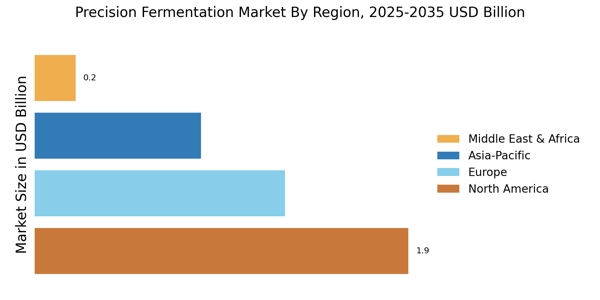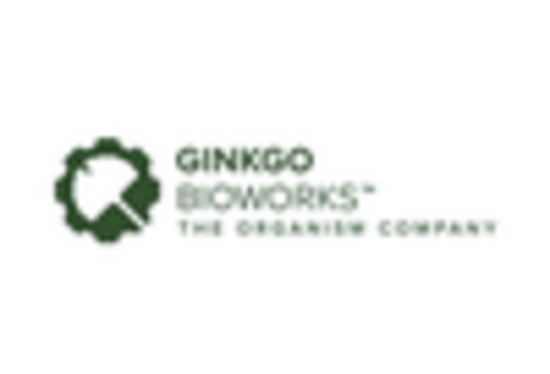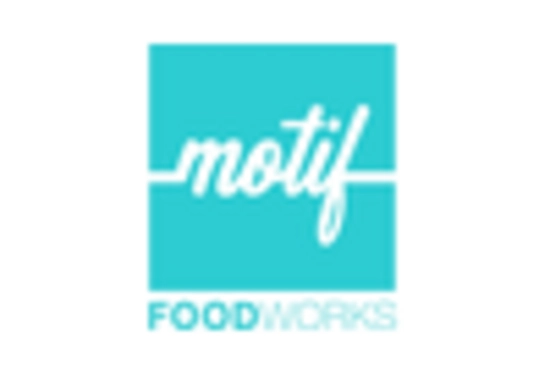The Precision Fermentation Market is currently characterized by a dynamic competitive landscape, driven by innovation, sustainability, and the increasing demand for alternative proteins. Key players are strategically positioning themselves to capitalize on these trends, with a focus on technological advancements and partnerships. Companies such as Perfect Day (US), Ginkgo Bioworks (US), and New Culture (US) are at the forefront, leveraging their unique capabilities to enhance product offerings and expand market reach. Perfect Day (US), for instance, emphasizes its commitment to creating dairy proteins through fermentation, which aligns with the growing consumer preference for sustainable food sources. Meanwhile, Ginkgo Bioworks (US) is known for its synthetic biology platform, which enables rapid development of microbial strains for various applications, thereby enhancing its competitive edge in the market.
The business tactics employed by these companies reflect a concerted effort to optimize supply chains and localize manufacturing processes. The Precision Fermentation Market appears moderately fragmented, with numerous players vying for market share. However, the collective influence of major companies is significant, as they drive innovation and set industry standards. This competitive structure fosters an environment where collaboration and strategic partnerships are essential for growth, allowing companies to pool resources and expertise to navigate the complexities of the market.
In August 2025, New Culture (US) announced a partnership with a leading dairy producer to co-develop a range of cheese products using precision fermentation technology. This collaboration is strategically important as it not only enhances New Culture's product portfolio but also allows for greater market penetration through established distribution channels. Such partnerships are indicative of a broader trend where companies seek to leverage existing infrastructures to accelerate product development and consumer adoption.
In September 2025, Ginkgo Bioworks (US) launched a new initiative aimed at enhancing its fermentation capabilities through advanced AI-driven analytics. This move is likely to streamline operations and improve the efficiency of strain development, positioning Ginkgo as a leader in the precision fermentation space. The integration of AI into fermentation processes could potentially revolutionize the industry by enabling faster and more cost-effective production methods, thereby attracting a wider customer base.
In October 2025, Perfect Day (US) unveiled a new line of plant-based ice creams that utilize its proprietary fermentation technology. This product launch not only diversifies its offerings but also aligns with the increasing consumer demand for plant-based alternatives. The strategic importance of this launch lies in its potential to capture a significant share of the growing market for dairy alternatives, further solidifying Perfect Day's position as a pioneer in the sector.
As of October 2025, the Precision Fermentation Market is witnessing a shift towards digitalization, sustainability, and the integration of advanced technologies such as AI. Strategic alliances are increasingly shaping the competitive landscape, enabling companies to enhance their capabilities and respond to market demands more effectively. Looking ahead, competitive differentiation is likely to evolve from traditional price-based competition to a focus on innovation, technological advancements, and supply chain reliability. This transition underscores the importance of agility and adaptability in a rapidly changing market environment.


















Leave a Comment